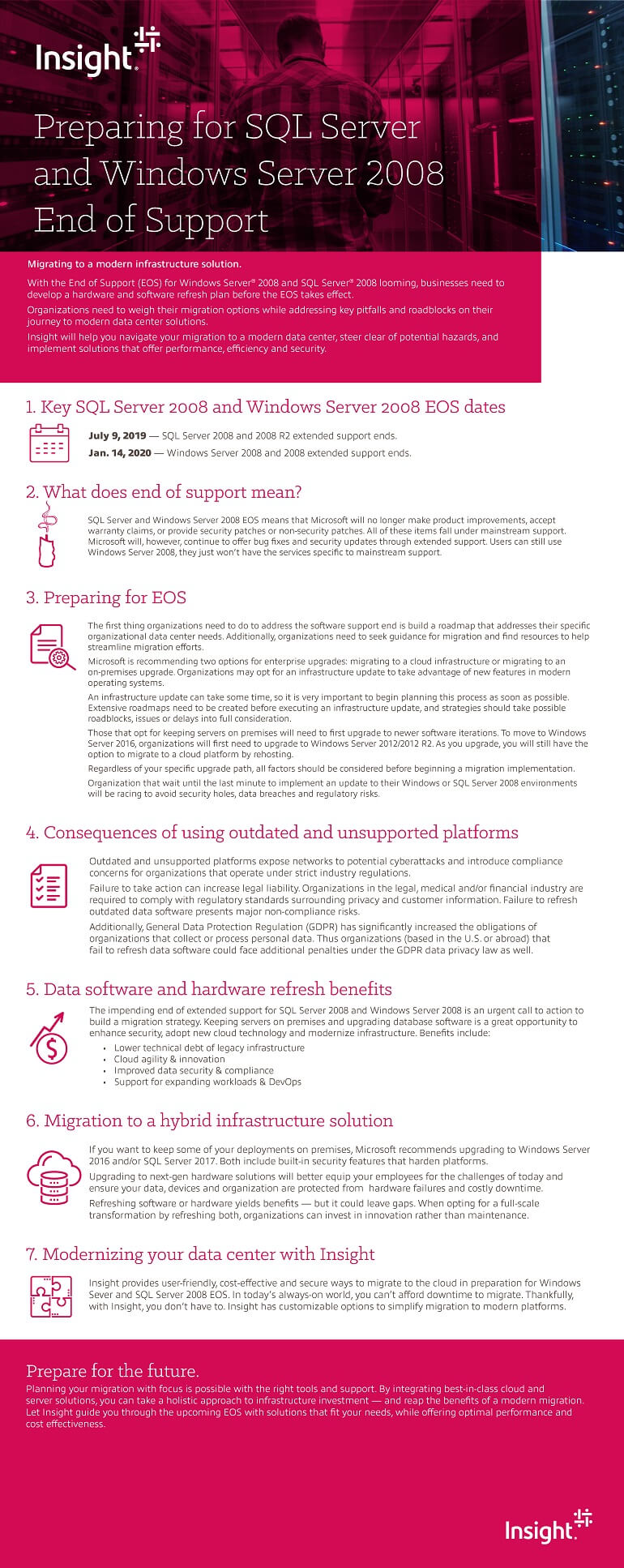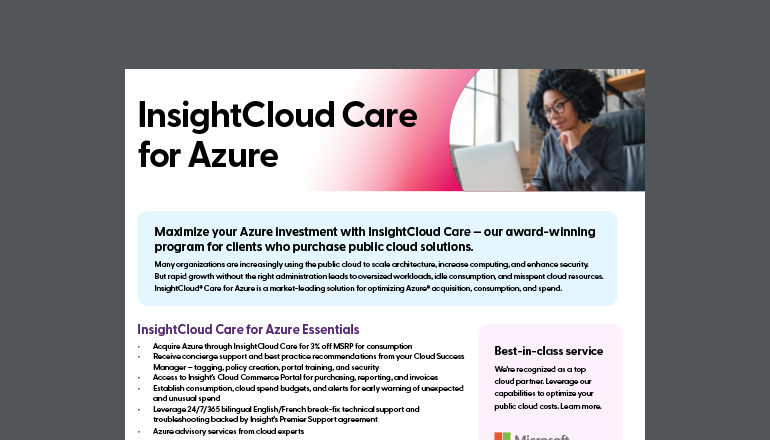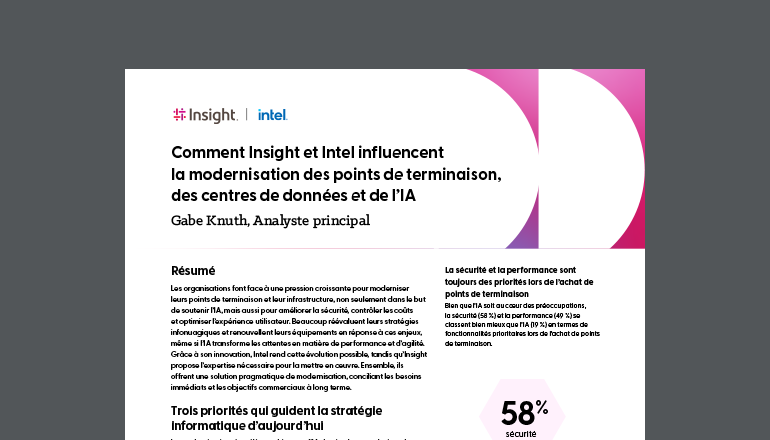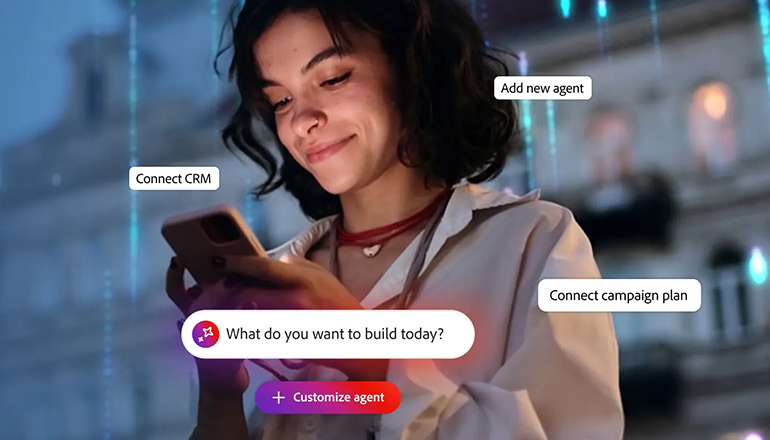Infographic text included for screen readers:
Preparing for SQL Server and Windows Server 2008 End of Support
Migrating to a modern infrastructure solution
With end of support for Windows Server® 2008 and SQL Server® 2008 looming, businesses need to develop a hardware and software refresh plan that weighs every migration option and addresses key pitfalls and roadblocks.
Insight is here to help. We’ll make sure you have everything you need to navigate your migration, implement solutions that avoid the risks of inaction and achieve greater performance, efficiency and security.
- Key SQL Server and Windows Server dates
- July 9, 2019 - SQL Server 2008 and 2008 R2 extended support ends.
- Jan. 14, 2020 - Windows Server 2008 and 2008 extended support ends.
- What does end of support mean?
SQL Server and Windows Server 2008 end of support means Microsoft will no longer make product improvements, accept warranty claims, or provide security or non-security patches. These services fall under mainstream support. Microsoft will continue to offer bug fixes and security updates through extended support. You can still use Windows Server 2008 as long as you don’t need the services specific to mainstream support.
- Preparing for end of support
The first thing organizations need to address is whether they need to upgrade to a new platform. Organizations may opt for an infrastructure update to take advantage of new features in modern operating systems.
An infrastructure update takes time. It’s important to begin planning and executing as soon as possible — considering possible roadblocks.
Organizations that wait until the last minute before implementing a server update will be racing to avoid security holes, data breaches and regulatory risks.
- Risks of not upgrading
Outdated and unsupported platforms expose the potential for unexpected cyberattacks and introduce compliance concerns for organizations that have specific industry regulations.
Failure to act can present legal liabilities. Organizations in the legal, medical and financial industries are required to comply with regulatory standards surrounding privacy and customer information. Procrastination to refresh outdated data software presents major non-compliance risks.
Additionally, the new General Data Protection Regulation (GDPR) has significantly increased the obligations of organizations that collect or process personal data. Organizations that fail to refresh data software could face additional penalties under the GDPR data privacy law.
- Data software and hardware refresh benefits
- Lower technical debt of legacy infrastructure
- Cloud agility and innovation
- Improved data security & compliance
- Support for expanding workloads and DevOps
The impending end of support for SQL Server 2008 and Windows Server 2008 is an urgent call to action to build a migration strategy. Making the shift the right way for your organization presents a great opportunity to enhance security, adopt new cloud technology and modernize your infrastructure.
- Migrating to a hybrid infrastructure solution
If you want to keep some of your deployments on premises, Microsoft recommends upgrading to Windows Server 2016 and/or SQL Server 2017. Both include built-in security features that harden platforms.
Upgrading to next-gen hardware solutions will better equip your employees for today’s challenges and ensure your data, devices and organization are protected from hardware failure and costly downtime.
Refreshing either software or hardware yields benefits — but could also leave gaps. When opting for a full-scale transformation by refreshing both hardware and software, organizations can put more investments toward innovation, not maintenance.
- Modernizing your data center with Insight
Our unique user-friendly capabilities offer cost-effective and secure way to take advantage of the cloud. In today’s always-on world, you can’t afford downtime to migrate. Insight has a customizable quickstart offer to simplify migration to the cloud.
Prepare for the future.
Planning your focused migration is possible with the right tools and support. By integrating best-in-class cloud and server solutions, you can take a holistic approach to your infrastructure investment — and reap the benefits of a modern migration. Insight can guide you through the upcoming end of support dates with tailored solutions that offer optimal performance and cost effectiveness.




